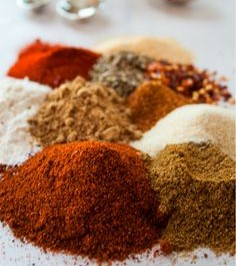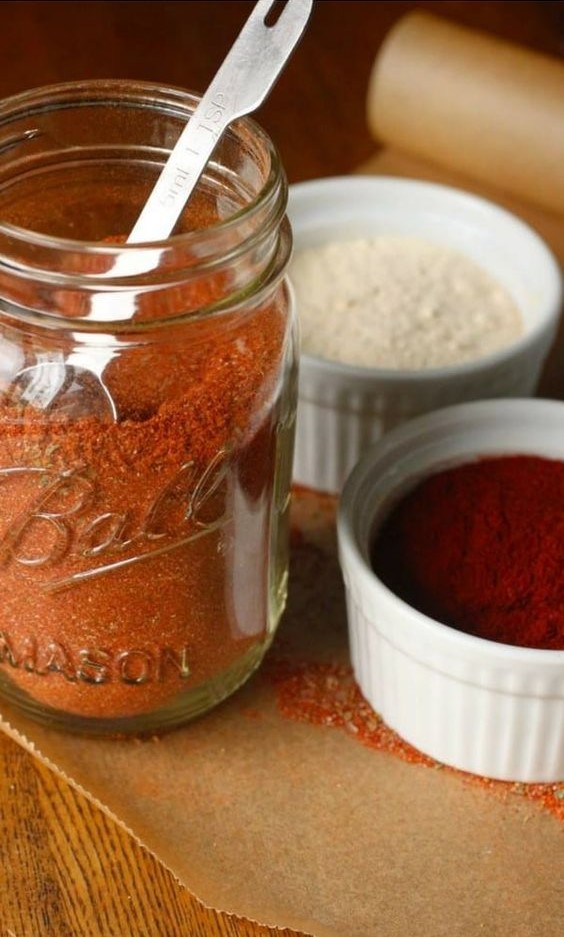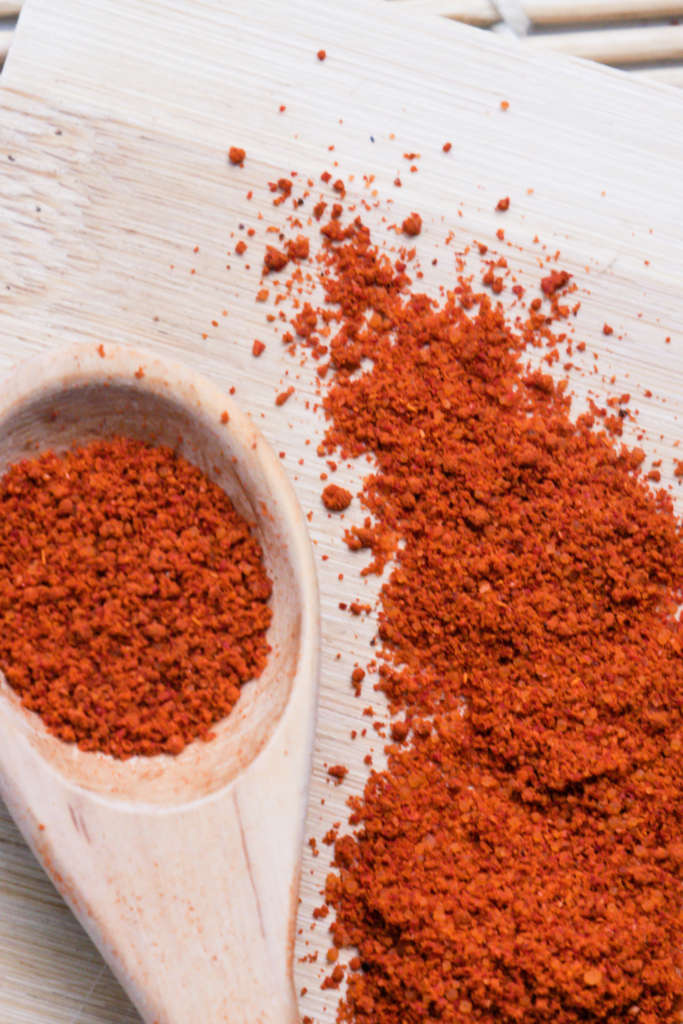
When it comes to spicing up your dishes and adding that unmistakable kick, chili powders are a go-to choice for many cooks. However, the world of chili powders is vast and diverse. Two popular options that often appear in recipes are Ancho Chili Powder and regular Chili Powder. In this culinary exploration, we’ll dive deep into the world of these chili powders, examining their unique flavors, uses, and the key differences that make them stand out.
Chili powders are a beloved secret weapon in the kitchens of culinary enthusiasts worldwide. These aromatic blends of ground chili peppers, herbs, and spices add depth, heat, and flavor to a variety of dishes. Amid the plethora of options, two contenders, Ancho Chili Powder and regular Chili Powder, consistently make their way onto the ingredient list.
The reddish-brown color of Ancho Chili Powder mirrors the sun-soaked chilies from which it is derived, and this visual warmth often translates into the dishes it graces. The rich color not only makes your food visually appealing but also contributes to the depth of its flavor. From hearty stews to vibrant salsas, this spice finds a welcome home in a wide range of Mexican culinary creations.
Ancho Chili Powder is a treasure trove of smoky, earthy flavors, and its milder flavor ensures that it enhances the authenticity of Mexican dishes without overpowering the palate. Its versatility and distinctive essence make it a beloved staple in Mexican cuisine and a cherished addition to spice cabinets around the world. Whether you’re crafting mole sauces or experimenting with your own spice blends, Ancho Chili Powder promises to elevate your culinary creations to new heights of deliciousness.

When exploring the world of chili powders, it’s essential to distinguish between the types of chiles used. Ancho Chili Powder, originating from dried poblano peppers, offers a unique flavor profile that sets it apart from other varieties. This includes a milder flavor, making it perfect for those who appreciate nuanced heat in their dishes.
Ancho Chili Powder’s rich, reddish-brown color is not only visually appealing but also symbolic of its sun-kissed origins. Its reputation as a staple in Mexican cuisine stems from its ability to add depth and warmth to a wide range of dishes, from beloved classics to creative experiments. This spice’s versatility extends from hearty stews to zesty salsas, finding a welcome place in kitchens and favorite dishes worldwide.
In essence, understanding the main difference between Ancho Chili Powder and other spicy powders lies in their flavor and heat. Ancho Chili Powder, with its milder flavor, is distinct from the fiery options you might find at your local grocery store, such as Korean chili powder or piri piri powder. Its role in Mexican cuisine is akin to the “holy trinity” of spices, a fundamental element in crafting authentic dishes.
So, next time you stroll down the spice aisle, remember the main difference between Ancho Chili Powder and its spicier counterparts. Its versatility and the wide range of chile peppers it complements make it a sought-after ingredient. Whether you’re a seasoned chef or just starting your culinary journey, Ancho Chili Powder, with its milder flavor and distinct qualities, promises to add an authentic touch of Mexico to your cooking.

Ancho Chili Powder
Regular Chili Powder
Ancho Chili Powder boasts a smoky flavor with a mild to moderate heat level. Its earthy undertones make it a staple in Mexican cuisine, especially in the creation of mole sauces. The rich, reddish-brown color and distinctive flavor add depth to a wide range of dishes.
Ancho Chili Powder, derived from dried ripe poblano peppers, is a culinary gem celebrated for its exceptional attributes. Its distinctive smoky flavor, coupled with a mild to moderate heat level, sets it apart as a versatile spice. The earthy undertones present in Ancho Chili Powder contribute to its status as a cornerstone in Mexican cuisine, notably in the crafting of mole sauces.
What makes Ancho Chili Powder visually captivating is its rich reddish-brown hue, reminiscent of the sun-drenched chilies from which it originates. This vibrant color not only pleases the eye but also infuses a warm depth into a wide spectrum of dishes.
Whether it’s the hearty warmth of chili con carne, the complexity of enchilada sauces, or the allure of spice blends for seasoning meats and vegetables, Ancho Chili Powder lends its unique and inviting character to elevate your culinary creations. Its versatility, with just the right amount of heat and a smoky embrace, makes it a favorite among chefs and home cooks alike, amplifying the flavor profiles of dishes and imparting a touch of authentic Mexican flair.

Regular Chili Powder varies widely depending on the brand and blend but tends to offer a medium to hot spice level. It provides a balance of heat and flavor, making it suitable for dishes like chili con carne, dry rubs, and Tex-Mex favorites.
Regular Chili Powder is a dynamic player in the world of spice blends, and its versatility is a testament to its popularity. While the specific heat level can vary depending on the brand and composition, it generally falls within the medium to hot range. This adaptable spice offers a balance of heat and flavor that enhances a diverse array of dishes.
One of its primary roles is as the star ingredient in the beloved chili con carne, where it contributes a robust, peppery kick that warms the soul. But its reach extends far beyond chili; it’s a key player in Tex-Mex cuisine, elevating dishes like fajitas, tacos, and enchiladas to flavor-packed heights.
Regular Chili Powder also excels in dry rubs, infusing meats with its rich, smoky notes and just the right amount of spiciness. Whether you’re grilling, roasting, or slow-cooking, this spice blend has you covered, adding depth and character to your culinary creations.
Its adaptability and wide range of applications make Regular Chili Powder a staple in spice racks and kitchen cabinets across North America. Its ability to strike a harmonious balance between heat and flavor ensures that it remains a favorite among chefs and home cooks, adding a dash of excitement to every bite.
For those who like to measure their heat, the Scoville Heat Units (SHU) scale comes into play.

If you find yourself with a missing ingredient, fear not! Ancho Chili Powder and Regular Chili Powder can often be substituted for each other, depending on your personal preferences and what’s available in your spice rack.
The choice between Ancho Chili Powder and Regular Chili Powder ultimately depends on the dish you’re preparing and your personal taste preferences. Consider the following factors:
In the world of chili powders, Ancho Chili Powder and Regular Chili Powder each bring their own unique characteristics to the table. Whether you’re aiming for the smoky richness of Ancho or the versatile spice blend of Regular Chili Powder, your choice should align with your culinary vision. Both have their place in the kitchen and exploring their distinct flavors can elevate your cooking to new heights. So, next time you reach for the spice rack, consider the dish you’re creating and let your taste buds guide you to the perfect chili powder choice.
With these insights, you’re well-equipped to embark on a flavorful journey through the world of chili powders. Happy cooking!
Note: Experimentation in the kitchen is encouraged. Personal preferences play a significant role in choosing the right chili powder for your dishes, so feel free to explore and adapt according to your taste!